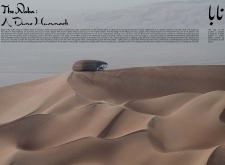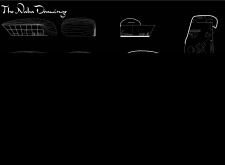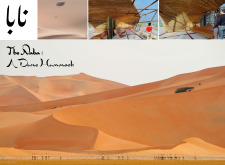5 key facts about this project
At its core, the project demonstrates a commitment to sustainability and community engagement. The design incorporates various elements that reflect both the cultural and natural contexts of the area, allowing it to resonate with local values and traditions. As a hub for [function of the building, such as community services, educational purposes, or residential living], the architecture prioritizes user experience and accessibility, ensuring that it meets the needs of the people who will interact with it.
The architectural layout features a series of interconnected spaces that promote flow and interaction. Each area has been meticulously planned to serve specific functions, whether for gathering, learning, or relaxation. The open-plan design significantly enhances the visibility and connectivity between different sections of the project, promoting a collaborative atmosphere. Natural light plays a crucial role in the overall experience, with strategically placed windows and skylights that illuminate the interior and reduce reliance on artificial lighting.
One notable aspect of the project is its approach to materiality. A blend of concrete, glass, and sustainable wood is utilized throughout the design, each material chosen for its performance characteristics, aesthetic appeal, and environmental impact. The use of concrete provides structural integrity, while large glass panels create a sense of openness and transparency, allowing occupants to feel connected to the outdoor environment. Wood introduces warmth and texture, further enhancing the ambiance of the spaces.
Additionally, the landscaping surrounding the architecture has been carefully curated to complement the building’s design. Native plants are integrated into the outdoor areas, promoting biodiversity and minimizing the need for extensive irrigation. This approach not only supports the ecological context but also encourages users to engage with nature, fostering a sense of community and well-being.
Unique design approaches within this project include the incorporation of flexible spaces that can adapt to a variety of functions. By allowing rooms to serve multiple purposes, the architecture effectively responds to the dynamic needs of its users. Furthermore, features such as movable partitions and multifunctional furniture enhance the versatility of the space, reflecting modern trends in architecture that prioritize adaptability.
Moreover, sustainability features are woven into the very fabric of the design. Energy-efficient systems, including solar panels and high-performance insulation, ensure that the building operates with a reduced carbon footprint. Rainwater harvesting systems are also integrated, demonstrating a commitment to responsible water management.
This architectural project is an example of how thoughtful design can harmonize with both the existing environment and the needs of the community. The synthesis of different materials, the incorporation of natural elements, and a focus on user experience highlight the architectural intentions behind the design. The attention to detail in the project's layout ensures it serves its function effectively while creating inviting spaces that encourage interaction and engagement.
For those interested in exploring the architectural nuances of this project further, reviewing the architectural plans, architectural sections, and various architectural designs will provide additional insights into the innovative ideas that shaped this endeavor. It is an opportunity to appreciate the intricacies of the design and the thoughtful considerations that went into creating a space that truly resonates with its surroundings and its users.


























